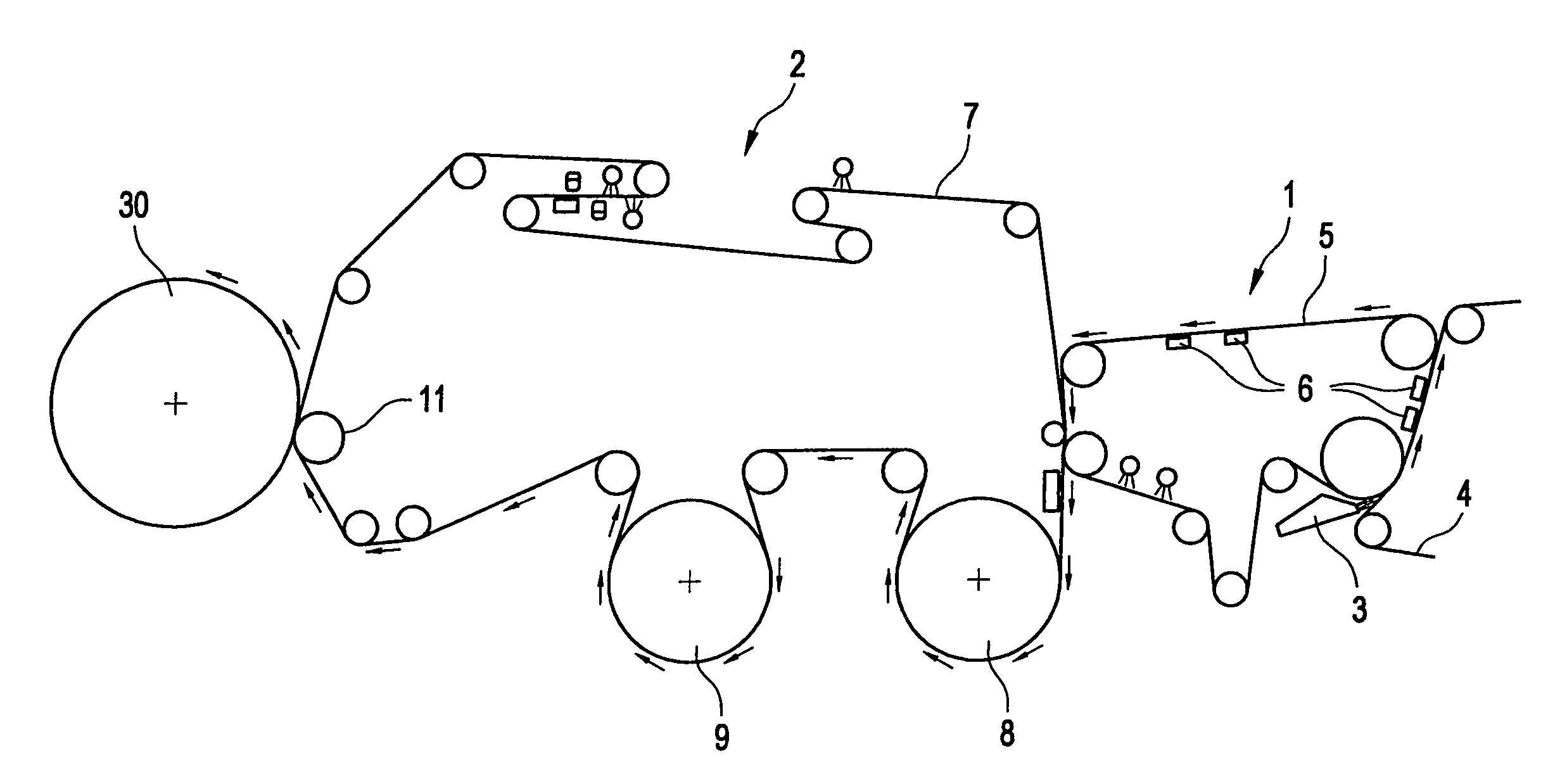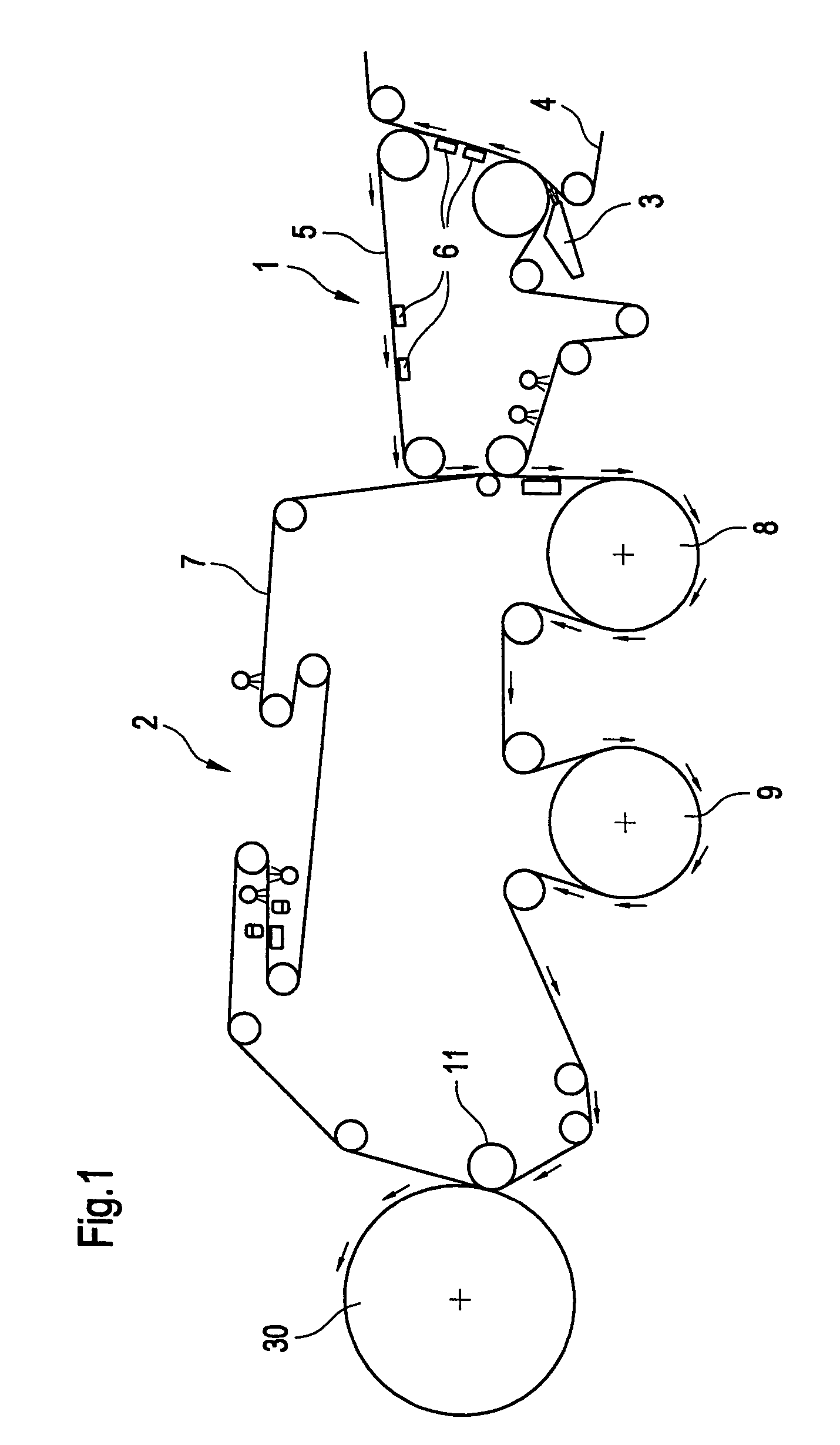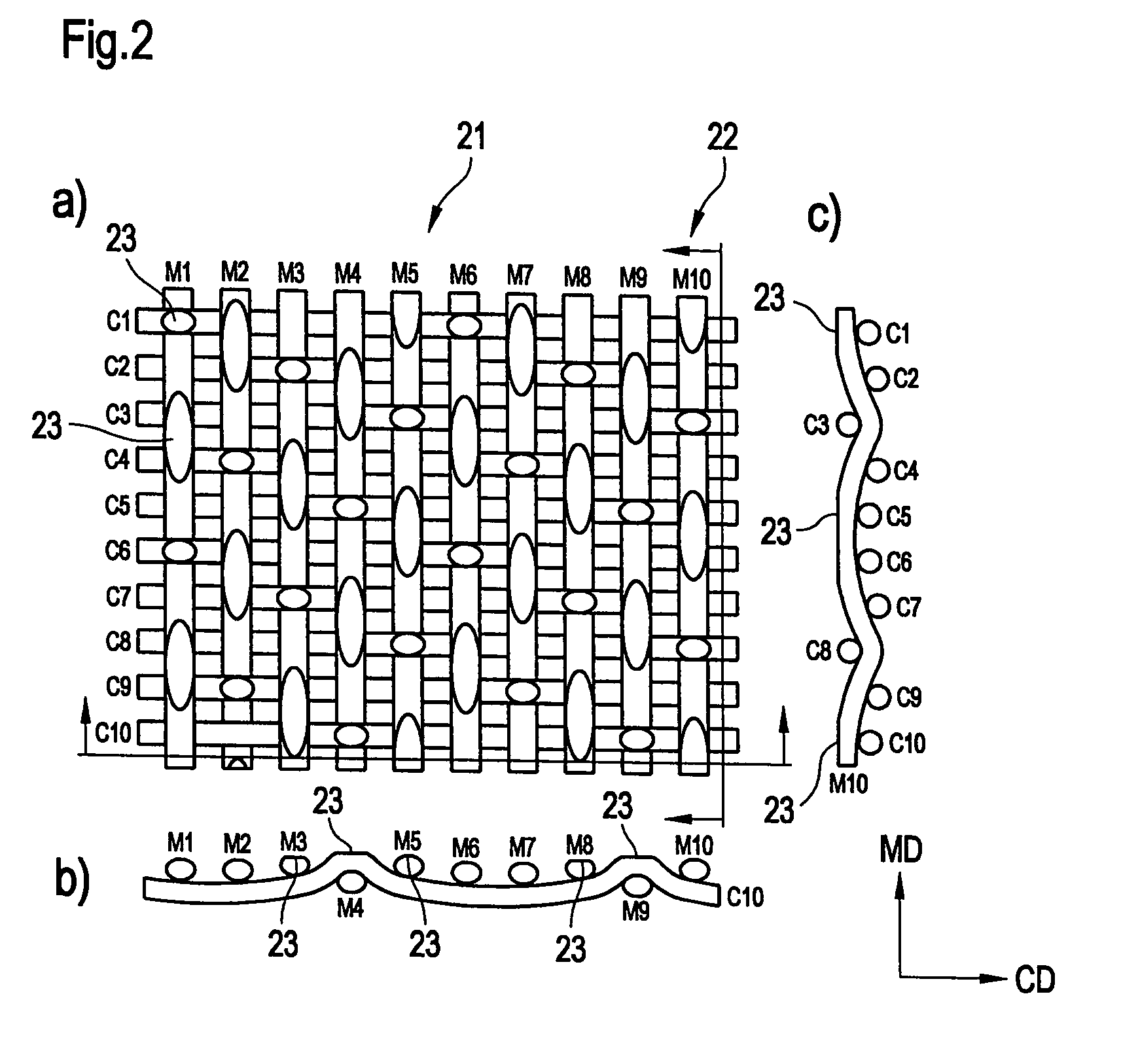Through air dryer fabric
a dryer and fabric technology, applied in the field of throughair dryers, can solve the problems of reducing the stability of the whole fabric, and causing the whole fabric to be inherently weak or less stabl
- Summary
- Abstract
- Description
- Claims
- Application Information
AI Technical Summary
Problems solved by technology
Method used
Image
Examples
Embodiment Construction
[0024]Referring now to the drawings, and more particularly to FIG. 1, there is shown a tissue making machine which generally includes a forming section 1, a series of through air dryers in the center section 2, and a yankee cylinder 30.
[0025]In the forming cylinder section 1, cellulose fibers are discharged as a slurry from a headbox 3 between forming wires 4 and 5 and subsequently carried forward on fabric 7. Dewatering is assisted by suction boxes 6 disposed on the roller side of the forming wire. The web formed on the wires 4 and 5 is then transferred to a TAD fabric 7 which transports the web around two TAD installations 8, 9 and to the yankee cylinder 30.
[0026]At this point roller 11 presses the paper sheet onto the yankee cylinder after which the sheet is crêped and then goes to a take up reel (not shown).
[0027]The TAD fabric 7 is a fabric in accordance with the present invention, which has a contact surface area of around 25%.
[0028]FIG. 2a shows a top view onto a section of p...
PUM
| Property | Measurement | Unit |
|---|---|---|
| diameter | aaaaa | aaaaa |
| Area | aaaaa | aaaaa |
| aspect ratio | aaaaa | aaaaa |
Abstract
Description
Claims
Application Information
 Login to View More
Login to View More - R&D
- Intellectual Property
- Life Sciences
- Materials
- Tech Scout
- Unparalleled Data Quality
- Higher Quality Content
- 60% Fewer Hallucinations
Browse by: Latest US Patents, China's latest patents, Technical Efficacy Thesaurus, Application Domain, Technology Topic, Popular Technical Reports.
© 2025 PatSnap. All rights reserved.Legal|Privacy policy|Modern Slavery Act Transparency Statement|Sitemap|About US| Contact US: help@patsnap.com



